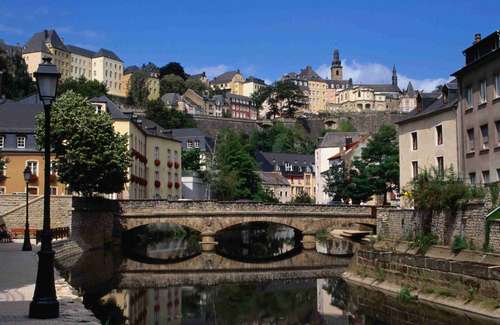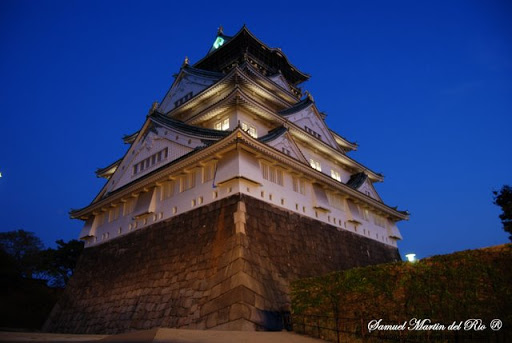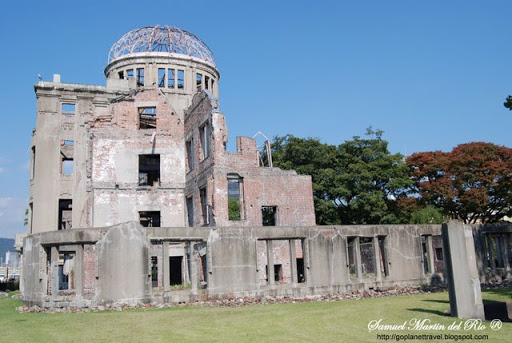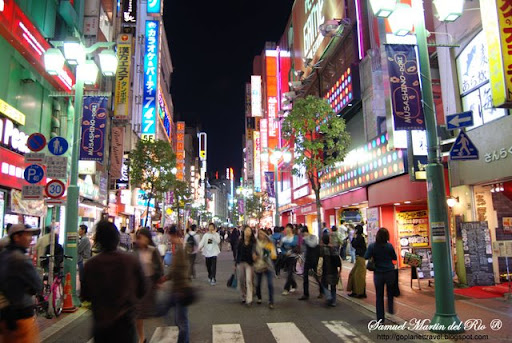Yucatan is the most tourist state of Mexico, with a lot of famous places as Cancun, Playa del Carmen, Chicen-itza, etc.
Places I visited:
Dzitnup Zenote
Samula Zenote
Chichen Itza
Merida
Progreso beach
Valladolid
videos video photo photos pictures fotos United States Estados Unidos US USA travel San Gervasio
Cozumelholiday vacation vacaciones gratis free http://goplanettravel.blogspot.com goplanettra
Before the arrival of the Spanish in the area, Yucatán was the home of the Maya civilization, and in particular the Yucatecan Maya people. Archaeological remains show ceremonial architecture dating back some 3,000 years; some Maya hieroglyphic inscriptions found in the area date back to the Maya Preclassic period (200 B.C.). Maya cities of Yucatán continued to flourish after the central and southern lowland Classic period Maya cities collapsed (900 AD), including the Puuc flouresence during the Terminal Classic, the rise of Chichen Itza at roughly the same time, and the subsequent rise of other sites, such as Mayapan, during the Postclassic.
flouresence during the Terminal Classic, the rise of Chichen Itza at roughly the same time, and the subsequent rise of other sites, such as Mayapan, during the Postclassic.
Several sites continued to be occupied up to and beyond the 16th century arrival of the Spanish. The ruins of well over a hundred Maya sites of varying sizes can still be found on the peninsula, such as Chichen Itza and Uxmal, though most sites have not been extensively investigated. Other important ancient Maya cities were built over by the Spanish, and their sites are still occupied today, such as Izamal.
According to Hernán Cortés' first letter (Cartas de relación) to the King of Spain, "Yucatan" represents a mis-naming of the land by his political antagonist Diego Velázquez. Cortés alleges that when Velazquez initially landed in Yucatan and asked about the name of the well-populated land, the indigenous people answered, "We don't understand your language." This was supp osedly rendered as Yucatan by the Spaniards, who were unfamiliar with the phonetics of Mayan. However, there was political antagonism between Cortés and Velázquez, and this story evidently represents an attempt to defame Velázquez. The actual source of the name "Yucatan" is the Nahuatl (Aztec) word Yokatlān, "place of richness."
osedly rendered as Yucatan by the Spaniards, who were unfamiliar with the phonetics of Mayan. However, there was political antagonism between Cortés and Velázquez, and this story evidently represents an attempt to defame Velázquez. The actual source of the name "Yucatan" is the Nahuatl (Aztec) word Yokatlān, "place of richness."
The conquest of the Maya city-states took decades of long fighting.
African slaves brought by the Spanish also played a major role during Yucatan conquest, many of them declaring themselves free after a revolt led by Gaspar Yanga took place. A lot of the freed slaves settled in small towns called palenques and declared themselves independent. They also interacted with the indigenous Maya mixing both cultures in to what is now know as Zambo or Afro-indigenous ancestry.
Three Spanish expeditions explored the coastal areas of Yucatan from 1517 to 1519, but no major effort was made to conquer the country until 1527 when the first expedition under Francisco de Montejo landed with Spanish crown authority to conquer and colonize Yucatán. While the chiefs of some states quickly pledged allegiance to the Spanish crown, others waged war against the Spanish. Montejo was forced to retreat from Yucatán in 1528. He came back with a large force in 1531, briefly established a capital at Chichén Itzá, but was again driven from the land in 1535. Montejo turned over his rights to his son, also named Francisco, who invaded Yucatán with a large force in 1540. In 1542 the younger Montejo set up his capital in the Maya city of T'ho, which he renamed Mérida. The lord (also known as Tutul Xiu in the Yucatec Maya language) of Mani converted to Roman Catholicism and became an ally, which greatly assisted in the conquest of the rest of the peninsula. When the Spanish and Xiu defeated an army of the combined forces of the states of eastern Yucatán in 1546, the conquest was officially complete.
major effort was made to conquer the country until 1527 when the first expedition under Francisco de Montejo landed with Spanish crown authority to conquer and colonize Yucatán. While the chiefs of some states quickly pledged allegiance to the Spanish crown, others waged war against the Spanish. Montejo was forced to retreat from Yucatán in 1528. He came back with a large force in 1531, briefly established a capital at Chichén Itzá, but was again driven from the land in 1535. Montejo turned over his rights to his son, also named Francisco, who invaded Yucatán with a large force in 1540. In 1542 the younger Montejo set up his capital in the Maya city of T'ho, which he renamed Mérida. The lord (also known as Tutul Xiu in the Yucatec Maya language) of Mani converted to Roman Catholicism and became an ally, which greatly assisted in the conquest of the rest of the peninsula. When the Spanish and Xiu defeated an army of the combined forces of the states of eastern Yucatán in 1546, the conquest was officially complete.
As of 1564 Yucatan became a captaincy general and fr om 1786 an intendencia, as a result of the Bourbon Reforms in the administration of the Indies.
om 1786 an intendencia, as a result of the Bourbon Reforms in the administration of the Indies.
The Spaniards were granted land and natives to work it for their benefit. Priests and monks set to bringing the population into the Roman Catholic Church. The first bishop of Yucatán, Diego de Landa, burned all the Maya books that could be located (saying "they contained nothing but the lies of the Devil") and suppressed any remnants of pagan beliefs with such vigour that he was for a time recalled to Spain to answer charges of improper harshness. The book he wrote (in the 1560s) in his defense, Relación de las cosas de Yucatán ("Relation of the Things of Yucatán"), is one of the single-most detailed accounts of Yucatán and of indigenous life from the time of the Conquest. Segments of this work would much later prove to be of instrumental value in the much-later decipherment of the pre-Columbian Maya writing system.
While the Maya embraced Christianity, many took it on as an addition to rather than a replacement of pre-Columbian beliefs, and some Christian Maya continue to offer prayers to the ancient agricultural deities in addition to the Christian God and saints.

There were periodic native revolts against Spanish rule, including a large one led by Can Ek in 1761.
In February 1821, Mexico achieved independence from Spain. On 2 November of that year, Yucatán became part of independent Mexico. The State of Yucatán at that time included the territory of what is now the states of Campeche and Quintana Roo as well.
In 1835, a conservative unitary system of government, basically a centralized dictatorship, was instituted in Mexico by President Antonio López de Santa Anna. Yucatán became a department, and authority was imposed from the center. Discontent increased and an insurrection erupted in Tizimín in May 1838, advocating Yucatecan independence. In 1840, the local Congress approved a declaration of independence for Yucatán. At first, Governor Santiago Méndez blocked it, saying that Yucatán would again recognize the rule of the central government in Mexico City if the Mexican Constitution of 1824 were reinstated. Andrés Quintana Roo, sent to Mérida in 1841 by President Santa Anna, succeeded in settling the differences and signed a treaty with the local gover nment.
nment.
But when Santa Anna later ignored the provisions of this treaty, hostilities resumed, and Governor Méndez ordered all Mexican flags removed from Yucatecan buildings and shipping in favor of the flag of the "sovereign nation of the Republic of Yucatán", two red and one white stripe, with a quincunx of stars in a green field. The Yucatecan Constitution was modeled in part on the 1824 Mexican Constitution and the Yucatán state constitution of 1825.
Santa Anna refused to recognize Yucatán's independence, and he barred Yucatecan ships and commerce in Mexico and ordered Yucatán's ports blockaded. He sent an army to invade Yucatán in 1843. The Yucatecans defeated the Mexican force, but the loss of economic ties to Mexico deeply hurt Yucatecan commerce. Yucatán's governor Miguel Barbachano decided to use the victory as a time to negotiate with Santa Anna's government from a position of strength. It was agreed that Yucatán would rejoin Mexico so long as various assurances of right t o self-rule and adherence to the 1825 Constitution within the Peninsula were observed by Mexico City. The treaty reincorporating Yucatán into Mexico was signed in December 1843.
o self-rule and adherence to the 1825 Constitution within the Peninsula were observed by Mexico City. The treaty reincorporating Yucatán into Mexico was signed in December 1843.
Once more, the central government rescinded earlier concessions and in 1845 Yucatán again renounced the Mexican government, declaring independence effective 1 January 1846. When the Mexican-American War broke out, Yucatán declared its neutrality.
In 1847 the so-called "Caste War" (Guerra de Castas) broke out, a major revolt of the Maya people against the Hispanic population in political and economic control. At one point in 1848, this revolt was successful to the point of driving all Hispanic Yucatecans out of almost the entire peninsula other than the walled cities of Mérida and Campeche.
The government in Mérida appealed for foreign help in suppressing the revolt, with Governor Méndez taking the extraordinary step of sending identical letters to Britain, Spain, and the United States, offering sovereignty over Yucatán to whatever nation first provided sufficient aid to quash the Maya revolt. The proposal received serious attention in Washington, D.C.—the Yucatecan ambassador was received by US President Jam es K. Polk and the matter was debated in the Congress, with no action taken other than an invocation of the Monroe Doctrine to warn off any European power from interfering in the peninsula.
es K. Polk and the matter was debated in the Congress, with no action taken other than an invocation of the Monroe Doctrine to warn off any European power from interfering in the peninsula.
After the end of the Mexican-American War, Governor Barbachano appealed to Mexican President José Joaquín de Herrera for help in suppressing the revolt, and in exchange Yucatán again recognized the central government's authority. Yucatán was again reunited with Mexico on 17 August 1848.
Frequent skirmishes and occasional large battles between the forces of the Yucatecan government and independent Maya of the eastern part of the peninsula continued through 1901, when the Mexican army occupied the Maya capital of Chan Santa Cruz. Some Maya communities in Quintana Roo continued to refuse to acknowledge Ladino or Mexican sovereignty as late as the 1910s.
Until the mid-20th century most of Yucatán's contact with the outside world was by sea; trade with the USA and Cuba, as well as Europe and other Caribbean islands, was more significant than that with the rest of Mexico. In the 1950s Yucatán was linked to the rest of Mexico by railway, followed by highway in the 1960s, ending the region's comparative isolation. Today Yucatán still demonstrates a unique culture from the rest of Mexico, including its own style of food.
with the USA and Cuba, as well as Europe and other Caribbean islands, was more significant than that with the rest of Mexico. In the 1950s Yucatán was linked to the rest of Mexico by railway, followed by highway in the 1960s, ending the region's comparative isolation. Today Yucatán still demonstrates a unique culture from the rest of Mexico, including its own style of food.
Commercial jet airplanes began arriving in Mérida in the 1960s, and additional international airports were built first in Cozumel and then in the new planned resort community of Cancún in the 1980s, making tourism a major force in the economy of the Yucatán Peninsula.
The first Maya governor of Yucatán, Francisco Luna Kan, was elected in 1976.
Today, the Yucatán Peninsula is a major tourism destination, as well as home to one of the largest indigenous populations in Mexico, the Maya people.
vel gotravelphoto
May 2008
Places I visited:
Dzitnup Zenote

Samula Zenote
Chichen Itza
Merida
Progreso beach
Valladolid
videos video photo photos pictures fotos United States Estados Unidos US USA travel San Gervasio
Cozumelholiday vacation vacaciones gratis free http://goplanettravel.blogspot.com goplanettra
Before the arrival of the Spanish in the area, Yucatán was the home of the Maya civilization, and in particular the Yucatecan Maya people. Archaeological remains show ceremonial architecture dating back some 3,000 years; some Maya hieroglyphic inscriptions found in the area date back to the Maya Preclassic period (200 B.C.). Maya cities of Yucatán continued to flourish after the central and southern lowland Classic period Maya cities collapsed (900 AD), including the Puuc
 flouresence during the Terminal Classic, the rise of Chichen Itza at roughly the same time, and the subsequent rise of other sites, such as Mayapan, during the Postclassic.
flouresence during the Terminal Classic, the rise of Chichen Itza at roughly the same time, and the subsequent rise of other sites, such as Mayapan, during the Postclassic.Several sites continued to be occupied up to and beyond the 16th century arrival of the Spanish. The ruins of well over a hundred Maya sites of varying sizes can still be found on the peninsula, such as Chichen Itza and Uxmal, though most sites have not been extensively investigated. Other important ancient Maya cities were built over by the Spanish, and their sites are still occupied today, such as Izamal.
According to Hernán Cortés' first letter (Cartas de relación) to the King of Spain, "Yucatan" represents a mis-naming of the land by his political antagonist Diego Velázquez. Cortés alleges that when Velazquez initially landed in Yucatan and asked about the name of the well-populated land, the indigenous people answered, "We don't understand your language." This was supp
 osedly rendered as Yucatan by the Spaniards, who were unfamiliar with the phonetics of Mayan. However, there was political antagonism between Cortés and Velázquez, and this story evidently represents an attempt to defame Velázquez. The actual source of the name "Yucatan" is the Nahuatl (Aztec) word Yokatlān, "place of richness."
osedly rendered as Yucatan by the Spaniards, who were unfamiliar with the phonetics of Mayan. However, there was political antagonism between Cortés and Velázquez, and this story evidently represents an attempt to defame Velázquez. The actual source of the name "Yucatan" is the Nahuatl (Aztec) word Yokatlān, "place of richness."The conquest of the Maya city-states took decades of long fighting.
African slaves brought by the Spanish also played a major role during Yucatan conquest, many of them declaring themselves free after a revolt led by Gaspar Yanga took place. A lot of the freed slaves settled in small towns called palenques and declared themselves independent. They also interacted with the indigenous Maya mixing both cultures in to what is now know as Zambo or Afro-indigenous ancestry.
Three Spanish expeditions explored the coastal areas of Yucatan from 1517 to 1519, but no
 major effort was made to conquer the country until 1527 when the first expedition under Francisco de Montejo landed with Spanish crown authority to conquer and colonize Yucatán. While the chiefs of some states quickly pledged allegiance to the Spanish crown, others waged war against the Spanish. Montejo was forced to retreat from Yucatán in 1528. He came back with a large force in 1531, briefly established a capital at Chichén Itzá, but was again driven from the land in 1535. Montejo turned over his rights to his son, also named Francisco, who invaded Yucatán with a large force in 1540. In 1542 the younger Montejo set up his capital in the Maya city of T'ho, which he renamed Mérida. The lord (also known as Tutul Xiu in the Yucatec Maya language) of Mani converted to Roman Catholicism and became an ally, which greatly assisted in the conquest of the rest of the peninsula. When the Spanish and Xiu defeated an army of the combined forces of the states of eastern Yucatán in 1546, the conquest was officially complete.
major effort was made to conquer the country until 1527 when the first expedition under Francisco de Montejo landed with Spanish crown authority to conquer and colonize Yucatán. While the chiefs of some states quickly pledged allegiance to the Spanish crown, others waged war against the Spanish. Montejo was forced to retreat from Yucatán in 1528. He came back with a large force in 1531, briefly established a capital at Chichén Itzá, but was again driven from the land in 1535. Montejo turned over his rights to his son, also named Francisco, who invaded Yucatán with a large force in 1540. In 1542 the younger Montejo set up his capital in the Maya city of T'ho, which he renamed Mérida. The lord (also known as Tutul Xiu in the Yucatec Maya language) of Mani converted to Roman Catholicism and became an ally, which greatly assisted in the conquest of the rest of the peninsula. When the Spanish and Xiu defeated an army of the combined forces of the states of eastern Yucatán in 1546, the conquest was officially complete.As of 1564 Yucatan became a captaincy general and fr
The Spaniards were granted land and natives to work it for their benefit. Priests and monks set to bringing the population into the Roman Catholic Church. The first bishop of Yucatán, Diego de Landa, burned all the Maya books that could be located (saying "they contained nothing but the lies of the Devil") and suppressed any remnants of pagan beliefs with such vigour that he was for a time recalled to Spain to answer charges of improper harshness. The book he wrote (in the 1560s) in his defense, Relación de las cosas de Yucatán ("Relation of the Things of Yucatán"), is one of the single-most detailed accounts of Yucatán and of indigenous life from the time of the Conquest. Segments of this work would much later prove to be of instrumental value in the much-later decipherment of the pre-Columbian Maya writing system.
While the Maya embraced Christianity, many took it on as an addition to rather than a replacement of pre-Columbian beliefs, and some Christian Maya continue to offer prayers to the ancient agricultural deities in addition to the Christian God and saints.

There were periodic native revolts against Spanish rule, including a large one led by Can Ek in 1761.
In February 1821, Mexico achieved independence from Spain. On 2 November of that year, Yucatán became part of independent Mexico. The State of Yucatán at that time included the territory of what is now the states of Campeche and Quintana Roo as well.
In 1835, a conservative unitary system of government, basically a centralized dictatorship, was instituted in Mexico by President Antonio López de Santa Anna. Yucatán became a department, and authority was imposed from the center. Discontent increased and an insurrection erupted in Tizimín in May 1838, advocating Yucatecan independence. In 1840, the local Congress approved a declaration of independence for Yucatán. At first, Governor Santiago Méndez blocked it, saying that Yucatán would again recognize the rule of the central government in Mexico City if the Mexican Constitution of 1824 were reinstated. Andrés Quintana Roo, sent to Mérida in 1841 by President Santa Anna, succeeded in settling the differences and signed a treaty with the local gover
 nment.
nment.But when Santa Anna later ignored the provisions of this treaty, hostilities resumed, and Governor Méndez ordered all Mexican flags removed from Yucatecan buildings and shipping in favor of the flag of the "sovereign nation of the Republic of Yucatán", two red and one white stripe, with a quincunx of stars in a green field. The Yucatecan Constitution was modeled in part on the 1824 Mexican Constitution and the Yucatán state constitution of 1825.
Santa Anna refused to recognize Yucatán's independence, and he barred Yucatecan ships and commerce in Mexico and ordered Yucatán's ports blockaded. He sent an army to invade Yucatán in 1843. The Yucatecans defeated the Mexican force, but the loss of economic ties to Mexico deeply hurt Yucatecan commerce. Yucatán's governor Miguel Barbachano decided to use the victory as a time to negotiate with Santa Anna's government from a position of strength. It was agreed that Yucatán would rejoin Mexico so long as various assurances of right t
Once more, the central government rescinded earlier concessions and in 1845 Yucatán again renounced the Mexican government, declaring independence effective 1 January 1846. When the Mexican-American War broke out, Yucatán declared its neutrality.
In 1847 the so-called "Caste War" (Guerra de Castas) broke out, a major revolt of the Maya people against the Hispanic population in political and economic control. At one point in 1848, this revolt was successful to the point of driving all Hispanic Yucatecans out of almost the entire peninsula other than the walled cities of Mérida and Campeche.
The government in Mérida appealed for foreign help in suppressing the revolt, with Governor Méndez taking the extraordinary step of sending identical letters to Britain, Spain, and the United States, offering sovereignty over Yucatán to whatever nation first provided sufficient aid to quash the Maya revolt. The proposal received serious attention in Washington, D.C.—the Yucatecan ambassador was received by US President Jam
After the end of the Mexican-American War, Governor Barbachano appealed to Mexican President José Joaquín de Herrera for help in suppressing the revolt, and in exchange Yucatán again recognized the central government's authority. Yucatán was again reunited with Mexico on 17 August 1848.
Frequent skirmishes and occasional large battles between the forces of the Yucatecan government and independent Maya of the eastern part of the peninsula continued through 1901, when the Mexican army occupied the Maya capital of Chan Santa Cruz. Some Maya communities in Quintana Roo continued to refuse to acknowledge Ladino or Mexican sovereignty as late as the 1910s.
Until the mid-20th century most of Yucatán's contact with the outside world was by sea; trade
 with the USA and Cuba, as well as Europe and other Caribbean islands, was more significant than that with the rest of Mexico. In the 1950s Yucatán was linked to the rest of Mexico by railway, followed by highway in the 1960s, ending the region's comparative isolation. Today Yucatán still demonstrates a unique culture from the rest of Mexico, including its own style of food.
with the USA and Cuba, as well as Europe and other Caribbean islands, was more significant than that with the rest of Mexico. In the 1950s Yucatán was linked to the rest of Mexico by railway, followed by highway in the 1960s, ending the region's comparative isolation. Today Yucatán still demonstrates a unique culture from the rest of Mexico, including its own style of food.Commercial jet airplanes began arriving in Mérida in the 1960s, and additional international airports were built first in Cozumel and then in the new planned resort community of Cancún in the 1980s, making tourism a major force in the economy of the Yucatán Peninsula.
The first Maya governor of Yucatán, Francisco Luna Kan, was elected in 1976.
Today, the Yucatán Peninsula is a major tourism destination, as well as home to one of the largest indigenous populations in Mexico, the Maya people.
vel gotravelphoto
May 2008



































































































No comments:
Post a Comment